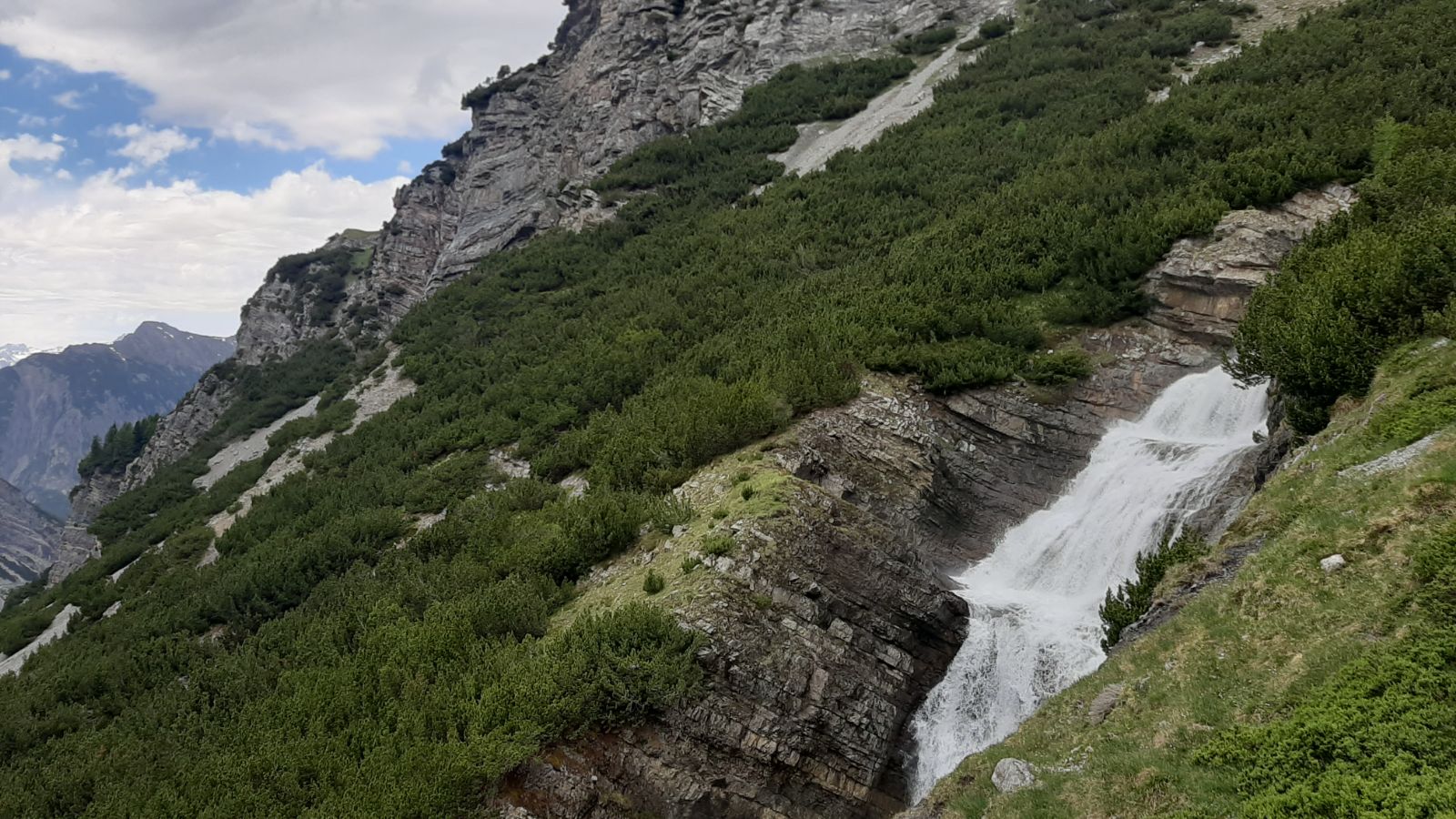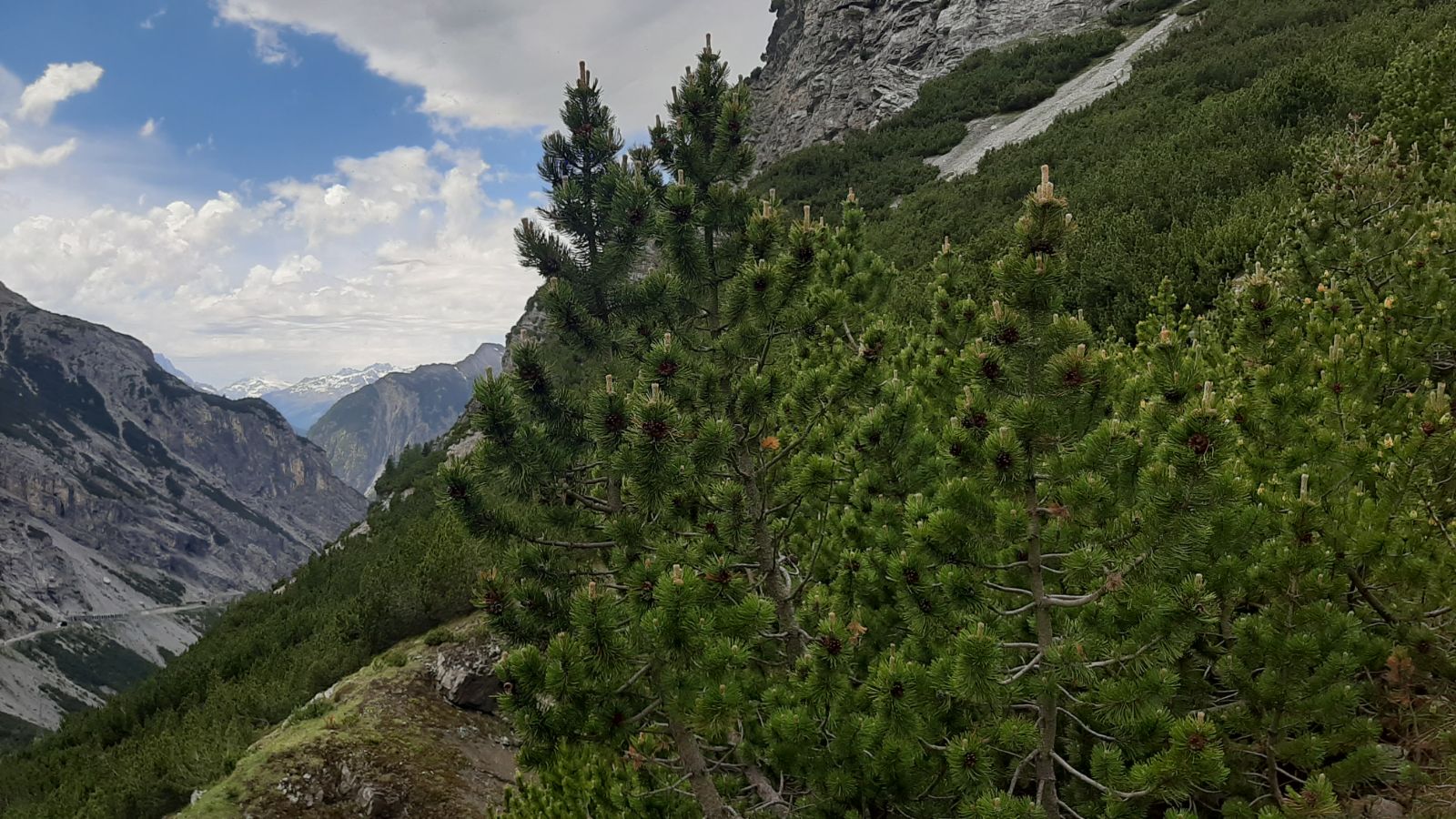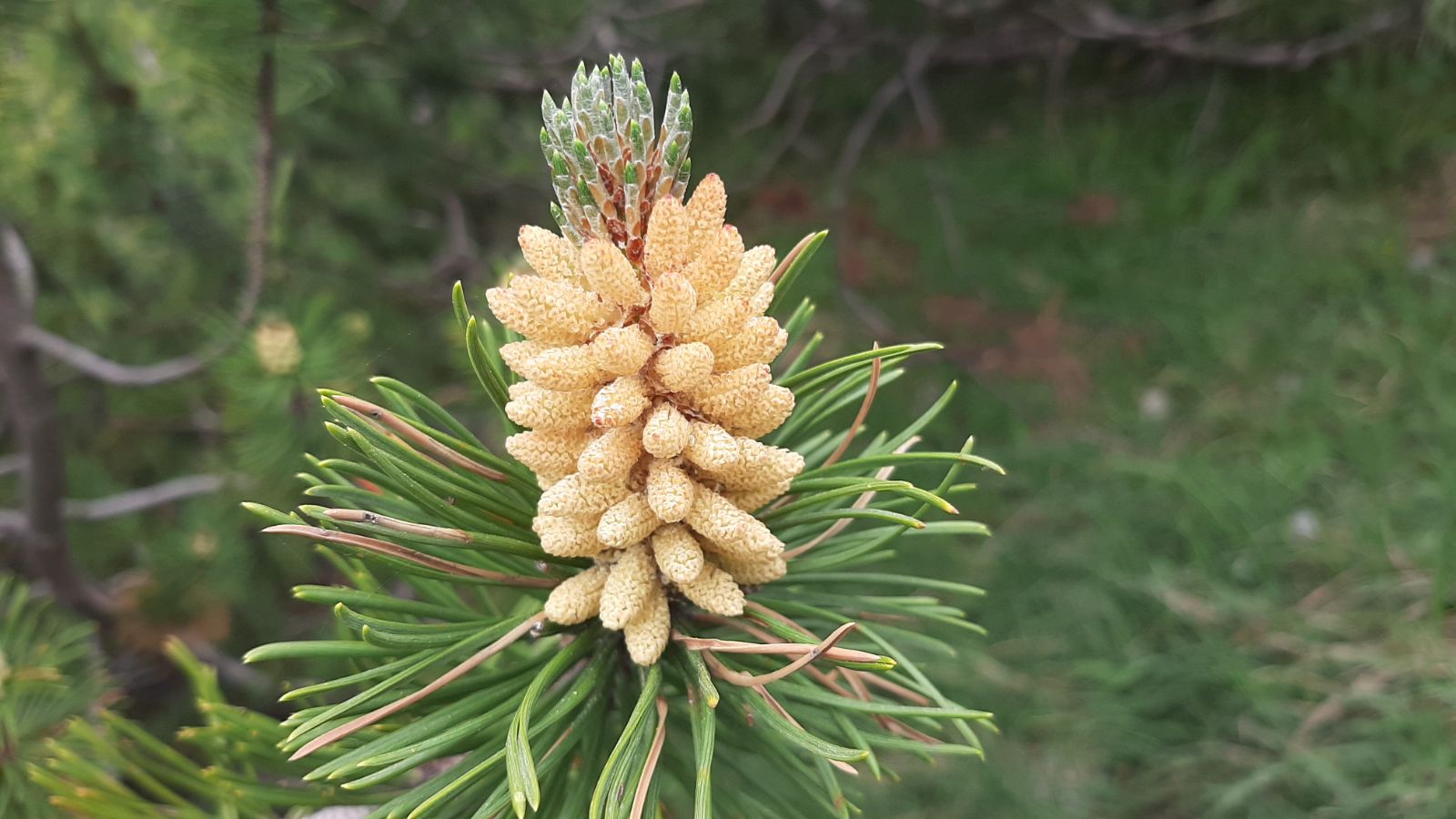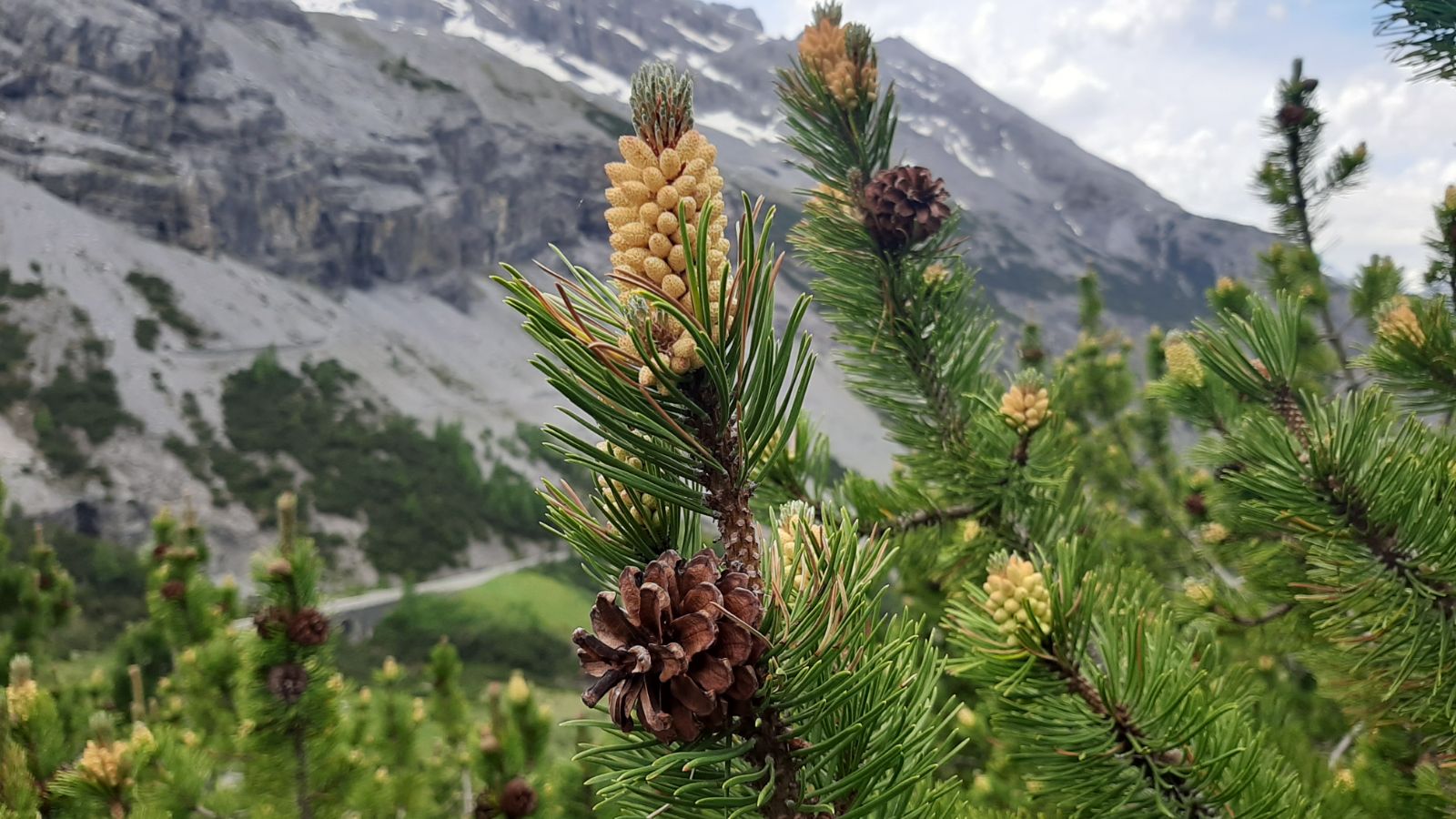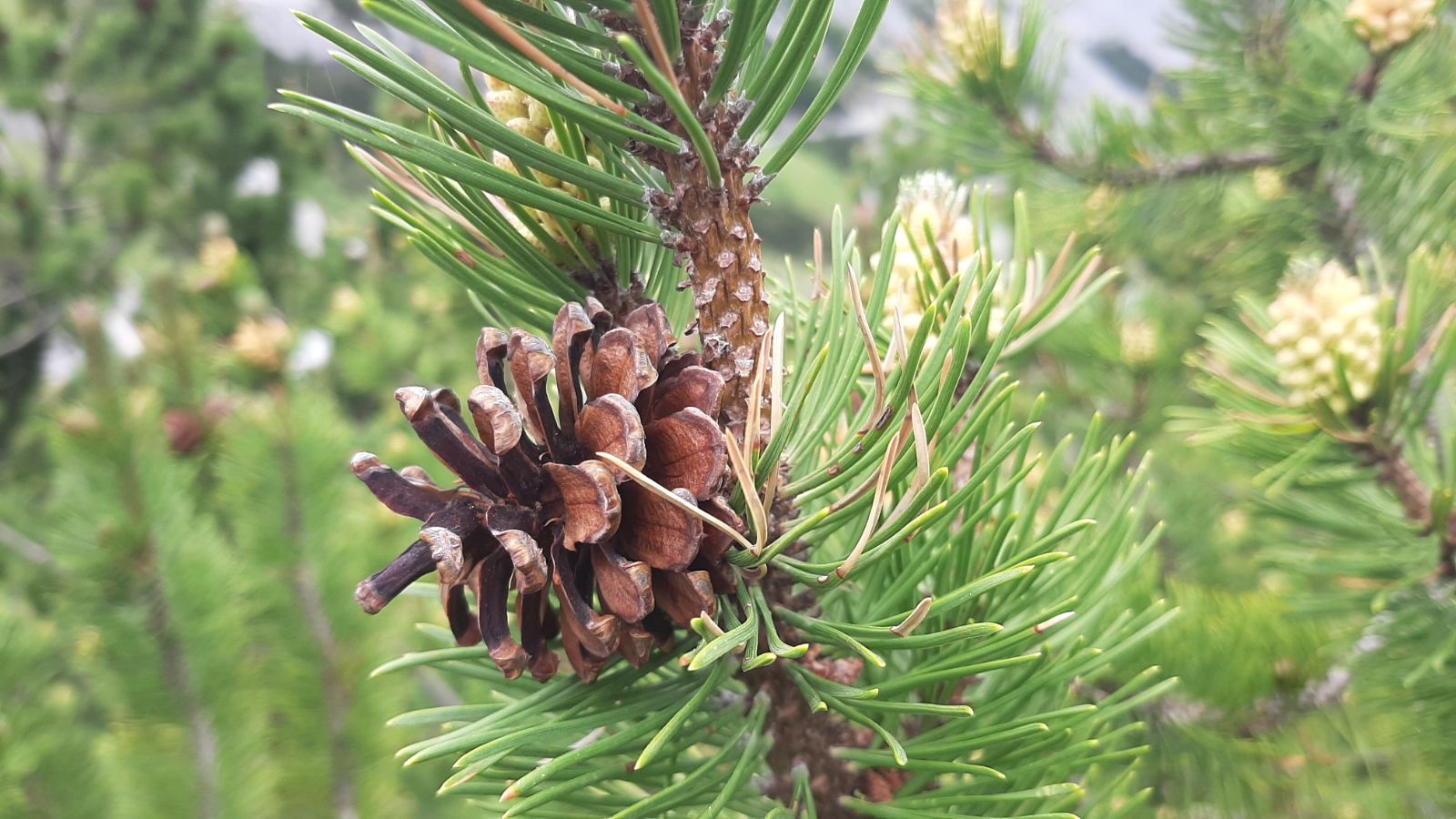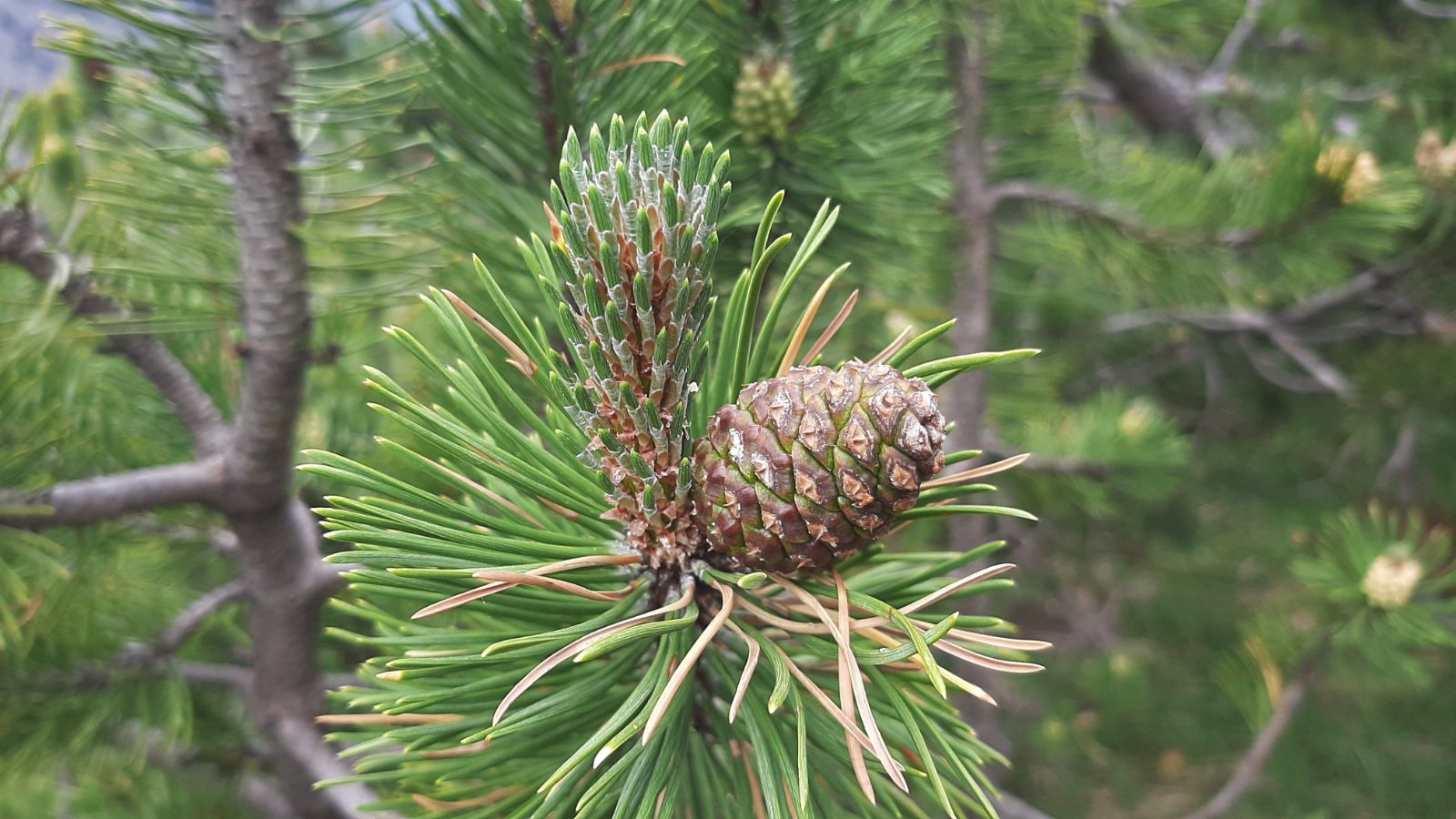Pinus mugo
Credits
Article from Bean's Trees and Shrubs Hardy in the British Isles
Recommended citation
'Pinus mugo' from the website Trees and Shrubs Online (treesandshrubsonline.
Infraspecifics
Other taxa in genus
- Pinus albicaulis
- Pinus arizonica
- Pinus armandii
- Pinus attenuata
- Pinus ayacahuite
- Pinus balfouriana
- Pinus banksiana
- Pinus bhutanica
- Pinus brutia
- Pinus bungeana
- Pinus canariensis
- Pinus cembra
- Pinus cembroides
- Pinus chiapensis
- Pinus contorta
- Pinus coulteri
- Pinus culminicola
- Pinus densata
- Pinus densiflora
- Pinus devoniana
- Pinus durangensis
- Pinus echinata
- Pinus edulis
- Pinus elliottii
- Pinus engelmannii
- Pinus eremitana
- Pinus flexilis
- Pinus gerardiana
- Pinus greggii
- Pinus × hakkodensis
- Pinus halepensis
- Pinus hartwegii
- Pinus heldreichii
- Pinus henryi
- Pinus × holfordiana
- Pinus hwangshanensis
- Pinus jeffreyi
- Pinus johannis
- Pinus koraiensis
- Pinus lambertiana
- Pinus leiophylla
- Pinus longaeva
- Pinus massoniana
- Pinus maximartinezii
- Pinus monophylla
- Pinus montezumae
- Pinus monticola
- Pinus morrisonicola
- Pinus muricata
- Pinus nelsonii
- Pinus nigra
- Pinus oocarpa
- Pinus orizabensis
- Pinus palustris
- Pinus parviflora
- Pinus patula
- Pinus peuce
- Pinus pinaster
- Pinus pinceana
- Pinus pinea
- Pinus ponderosa
- Pinus pseudostrobus
- Pinus pumila
- Pinus pungens
- Pinus quadrifolia
- Pinus radiata
- Pinus remota
- Pinus resinosa
- Pinus rigida
- Pinus roxburghii
- Pinus sabiniana
- Pinus serotina
- Pinus sibirica
- Pinus strobiformis
- Pinus strobus
- Pinus sylvestris
- Pinus tabuliformis
- Pinus taeda
- Pinus taiwanensis
- Pinus teocote
- Pinus thunbergii
- Pinus torreyana
- Pinus virginiana
- Pinus wallichiana
- Pinus wangii
- Pinus yunnanensis
A shrubby pine of variable habit (see below). Winter-buds cylindric, resinous, with numerous scales. Leaves two in a bundle, 1 to 3 in. long, vivid green, rigid, blunt, persisting at least five years and sometimes ten years or even more; leaf-sheath 3⁄8 to 5⁄8 in. long. Cones solitary or in clusters of two or three near the tips of the shoots, very shortly stalked or sessile, brown and glossy when ripe, 1 to 2 in. long, ovoid, symmetrical, the apex of the scales flat with a central boss, or more or less raised and then convex on the upper side, concave on the lower, with the boss displaced to the lower edge. Seeds small, winged.
Native of the mountains of Central Europe, the Carpathians, the Balkans, and of the Italian Apennines; introduced to Britain in the second half of the 18th century. In its best-known and most characteristic form, P. mugo is a low, spreading shrub forming dense entanglements of snake-like stems known in German as ‘krummholz’ or ‘knieholz’. But it may be erect-branched. In the Alps P. mugo has its main distribution in the eastern limestone ranges, and is rare in Switzerland in its characteristic form (see further below).
The above description includes var. pumilio (Haenke) Zenari, which has cones with displaced bosses, in contrast to the typical variety with a central boss. There is no difference in habit between the two.
The dwarf mountain pine is extremely useful as an evergreen covering for dry slopes and mounds, and thrives in the poorest soil. Making no tap-root, it transplants well. There are numerous garden selections, propagated by grafting, of which the best known is ‘Gnom’. This makes a dense bush up to about 6 ft in height and as much in width.
From the Supplement (Vol. V)
In addition to the cultivar ‘Gnom’ mentioned on page 230, there is another, named ‘Mops’, of similar habit but not much over 3 ft in height, more in width.
var. uncinata – specimens: University Botanic Garden, Cambridge, 52 × 5 ft (1980); Bowood, Wilts., 50 × 31⁄4 ft (1984); National Botanic Gardens, Glasnevin, Eire, 57 × 41⁄4 ft (1980).
P uncinata Mirb.
Common Names
Mountain Pine
Synonyms
P. mugo var. rostrata (Ant.) Hoopes
P. montana var. rostrata Ant.
This resembles P. mugo in foliage, but makes a tree up to 80 ft high and differs markedly in its cones, which are up to 2{3/4} in. long, very oblique at the base, the scales on the outer side with a protuberant pyramidal apex ending in a backward-pointing hook. But at the eastern end of the area of the species, the hook is absent or not so pronounced (var. rotundata (Link) Antoine).P. uncinata, in contrast to P. mugo, has a predominantly western distribution. It is best developed in the eastern Pyrenees, where it yields an excellent timber, and extends thence into the Alps. In Switzerland there is a well-known stand in the Swiss National Park below the Ofen pass, where it forms secondary forest, usurping the place of the original forest of Arolla pine and larch, which was destroyed long ago to provide fuel for local iron-works. The mountain pine is capable of growing in poor soils both wet and dry, but is little used in this country as a plantation tree. In France its main use is for reafforestation in places where more productive species cannot thrive. There is a specimen in the University Botanic Garden, Cambridge, measuring 50 × 4{1/2} ft (1969).In their typical states P. mugo and P. uncinata are distinct enough in habit and in their cones, but in the Alps, and especially in Switzerland, a bewildering array of intermediate forms occur, which are probably the result of past hybridisation between the two species. In habit they vary from true trees through various shrubby but erect forms to the typical decumbent form of P. mugo, and the cones show a continuous variation from the asymmetrical, hook-scaled cones of P. uncinata to the symmetrical, flat-surfaced cones of P. mugo. But there is no correlation between habit and cone characters.In forestry, the shrubby erect-growing intermediates are useful as a pioneer crop on poor soils, and for shelter in exposed places.

